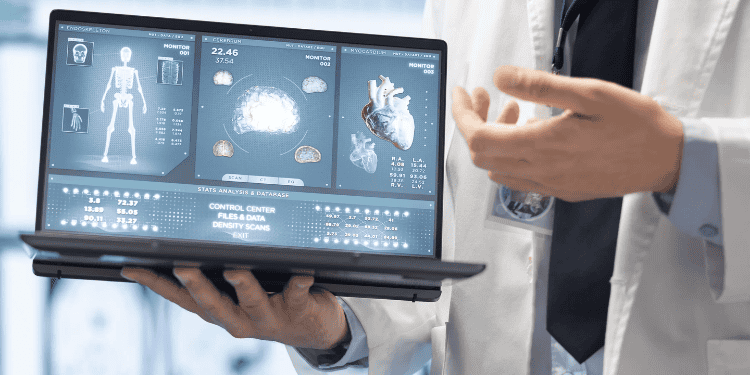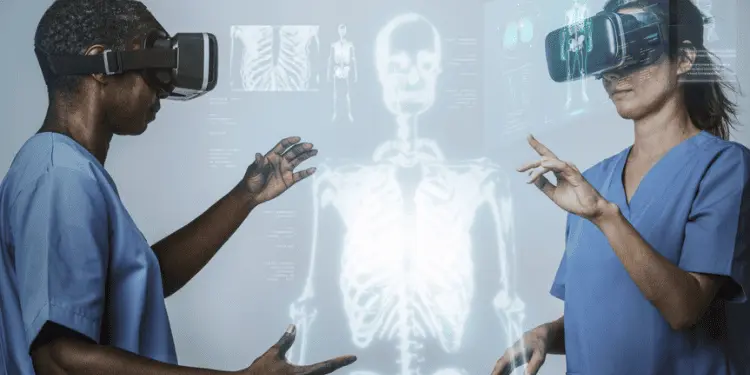- Ralph Danding
- Category - Medical Practices

In the fast-evolving landscape of healthcare, the future of medical practices stands at the intersection of innovation, challenges, and unprecedented opportunities. As technology continues to transform the way we approach healthcare, medical professionals are faced with a myriad of possibilities to enhance patient care and outcomes. From AI-driven diagnostics to telemedicine solutions, the advancements in medical practices are reshaping the industry as we know it.
In this article, we explore the exciting future of medical practices, exploring the innovative technologies that are driving change, the challenges that practitioners navigate in adopting these innovations, and the vast opportunities that lie ahead. Join us on a journey through the transformative trends shaping the healthcare sector and discover how these advancements are poised to revolutionize the way we deliver and receive medical care.
Cutting-edge technologies are rapidly transforming the healthcare industry, enhancing patient care and efficiency. A major breakthrough is the integration of electronic health records (EHRs), enabling seamless patient data sharing among providers. This technology boosts collaboration among healthcare professionals while enhancing diagnostic accuracy and treatment effectiveness.
With real-time patient data, providers can make informed decisions, improving health outcomes and streamlining care. Furthermore, EHRs facilitate the management of chronic diseases, enabling proactive interventions that can prevent complications.
Another groundbreaking technology is the use of wearable devices that monitor health metrics in real-time. These devices—ranging from fitness trackers to medical monitors—enable patients to take control of their health. By continuously tracking vital signs such as heart rate, blood pressure, and oxygen levels, wearables provide invaluable data to both patients and healthcare providers.

Not only does this data-driven approach help identify potential health risks early, but it also inspires healthier lifestyle choices. As wearable technology becomes more sophisticated, this innovation is poised to enhance personalized medicine, refining treatments to match each patient’s unique health needs.
Artificial intelligence (AI) is revolutionizing medical practices with groundbreaking advancements. AI-driven algorithms are being utilized in various capacities, from predictive analytics that forecast patient outcomes to automated systems that assist in radiology and pathology. These technologies enhance diagnostic accuracy and reduce the time required for analysis, allowing healthcare professionals to focus more on patient interaction.
Moreover, AI applications in medical imaging are revolutionizing the way conditions are detected and monitored, paving the way for earlier interventions. As AI advances, its integration into clinical workflows enhances efficiency and reduces human error.
Despite the myriad benefits that innovative technologies offer, medical practices face several challenges in their adoption. A major challenge is the high financial investment needed for new systems and technologies. Upgrading to state-of-the-art software, purchasing equipment, and training staff all come with substantial costs that can strain budgets, especially for smaller practices.
This financial barrier can deter healthcare providers from pursuing the latest advancements, leaving them at a competitive disadvantage in an increasingly technology-driven market.
Medical practices struggle to adapt as technology advances at an unprecedented rate. Many healthcare professionals may feel overwhelmed by the sheer volume of new tools and systems emerging regularly. This can lead to resistance to change, where staff may prefer established methods over embracing new technologies that require a learning curve.
The fear of disrupting established workflows and the potential for technical glitches further complicate the transition to new systems, creating a reluctance to adopt innovations that could enhance care delivery.
Integrating new technologies into existing workflows often brings logistical challenges. For instance, healthcare providers must ensure that new systems are compatible with current EHRs and other software applications. The process of integrating disparate technologies can be time-consuming and may require additional resources, which can stretch already limited staff capacities. Proper training and comfort with new technologies are key to successful implementation, yet it can prove to be a significant undertaking for many medical practices.
Telemedicine’s impact on healthcare became even more evident during COVID-19. This technology allows healthcare providers to offer virtual consultations, enabling patients to receive care from home, helping patients consult doctors and receive treatment from home. By expanding care to underserved areas, telemedicine also helps reduce the load on healthcare facilities.
With the ability to connect with specialists and primary care providers via video calls, patients can receive timely interventions without the need for physical travel, a crucial benefit for patients with limited mobility or ongoing health conditions.
As telemedicine continues to evolve, its potential to reshape healthcare delivery models becomes increasingly apparent. It allows healthcare providers to expand their reach and serve more patients.
For practices, this ensures a steady patient flow, unaffected by location. Furthermore, telemedicine can facilitate continuity of care for patients with chronic illnesses, enabling regular follow-ups and ongoing management without the need for in-person visits. This not only enhances patient satisfaction but also fosters better health outcomes through consistent monitoring and support.
However, the expansion of telemedicine is not without its challenges. One significant concern is the need for robust regulatory frameworks that address reimbursement policies and licensure issues across state lines. As telemedicine expands beyond borders, providers must navigate diverse and complex regulations across jurisdictions.
Additionally, ensuring that patients have access to the necessary technology and internet connectivity remains a critical factor in the effective implementation of telemedicine services. Addressing these challenges will be essential for telemedicine to reach its full potential in the future of medical practices.
The healthcare sector presents vast growth opportunities, fueled by technological advancements and shifting patient needs. A key opportunity is personalized medicine, which customizes treatments based on genetics, lifestyle, and preferences.
As the field of genomics continues to advance, by leveraging genetic insights, providers can create targeted therapies that enhance effectiveness and minimize side effects.This shift towards personalized care not only enhances patient satisfaction with the added benefit of improving outcomes and cutting costs.
Additionally, the rising demand for mental health services offers healthcare practices a chance to expand their care options.
As awareness of mental health’s role in overall well-being grows, there is a pressing need for accessible and effective mental health care. Practices that integrate teletherapy and other digital mental health solutions can tap into this expanding market, providing essential services to patients who may otherwise face barriers to care.
This expansion can also enhance collaboration between mental health professionals and primary care providers, fostering a more holistic approach to patient wellness.
Moreover, the rise of health tech startups and innovations presents opportunities for established medical practices to collaborate and enhance their services. Healthcare providers can enhance efficiency and engagement by adopting cutting-edge tools through tech partnerships.
Whether through the implementation of patient portals, mobile health applications, or remote monitoring systems, these collaborations can enhance the patient experience and position medical practices as leaders in the evolving healthcare landscape. Embracing these opportunities will be crucial for practices aiming to thrive in a competitive market.
As healthcare practices increasingly adopt innovative technologies, data security and privacy concerns have emerged as critical issues that cannot be overlooked. Integrating EHRs, telemedicine, and wearables leads to the collection of extensive patient data. This data, while invaluable for improving patient care and outcomes, also poses significant risks if not adequately protected.
Cybersecurity threats such as data breaches can compromise patient confidentiality, leading to legal repercussions and loss of trust among patients. Therefore, healthcare organizations must prioritize robust cybersecurity measures to safeguard patient information.
These technologies—EHRs, telemedicine, and wearables—create vast stores of sensitive patient information. Healthcare providers are required to implement stringent protocols to protect patient data from unauthorized access, whether through electronic means or physical records.
This necessitates ongoing training for staff, regular audits of security systems, and the establishment of clear policies regarding data handling. Ensuring compliance with these regulations is not only vital for protecting patient privacy but also for avoiding substantial fines and penalties associated with breaches.
Furthermore, as the healthcare industry continues to embrace cloud computing and other digital solutions, concerns regarding data ownership and management have arisen. Medical practices must carefully evaluate the vendors they partner with, ensuring that they adhere to strict security standards and privacy regulations.
Transparency in data management practices is essential, as patients become more aware of their rights over personal data. Prioritizing data security and privacy helps healthcare organizations build trust and accountability, which is paramount in maintaining patient relationships in the digital age.
Medical diagnostics and treatment are being revolutionized by AI and machine learning in healthcare. These technologies enable healthcare providers to analyze vast amounts of data quickly and accurately, leading to improved diagnostic capabilities. For instance, AI algorithms can process medical imaging results, identifying anomalies that may be missed by the human eye.

This enhanced accuracy not only expedites the diagnosis of conditions such as cancer but also helps in monitoring disease progression, allowing for more timely interventions.
In addition to diagnostics, AI plays a crucial role in treatment planning and personalization. Machine learning models can analyze patient data, including genetic information, lifestyle factors, and treatment responses, to recommend tailored treatment plans. This data-driven approach ensures that patients receive therapies that are most likely to be effective for their unique circumstances.
Furthermore, AI can assist in predicting patient outcomes, helping healthcare providers make well-informed treatment decisions. The potential for improved efficacy and reduced adverse effects makes AI an invaluable tool in modern medicine.
However, the successful integration of AI and machine learning into clinical practice comes with its challenges. One major concern is the need for high-quality data to train these algorithms effectively. Incomplete or biased data can lead to inaccurate predictions and recommendations, potentially harming patients. Additionally, healthcare providers must navigate the ethical implications of using AI in decision-making processes, ensuring that human oversight remains an integral part of patient care. Balancing the benefits of AI with the need for ethical considerations will be crucial as the healthcare industry continues to embrace these transformative technologies.
As healthcare evolves, training and upskilling professionals is crucial for navigating modern medical complexities. Continuous education ensures they stay updated on the latest tools, techniques, and best practices amid rapid technological advancements.
Institutions and healthcare organizations must prioritize ongoing professional development, offering workshops, courses, and specialized certifications in cutting-edge areas such as telemedicine, AI, and healthcare data analytics.
Moreover, soft skills training is equally important in the context of evolving healthcare delivery models. As patient engagement becomes increasingly central to care, healthcare professionals must develop strong communication and interpersonal skills to foster meaningful relationships with patients.
Training programs that emphasize empathy, active listening, and cultural competence can enhance the patient experience and improve clinical outcomes. By combining technical proficiency with patient-centered values, this holistic development approach prepares healthcare providers for modern medical challenges.
Encouraging innovation within healthcare organizations helps professionals embrace emerging technologies and practices. Leadership should promote an environment where staff feel empowered to explore innovative solutions and provide feedback on new tools and processes.
Through a culture of flexibility and continuous skill development, healthcare organizations can better prepare their workforce for the challenges of tomorrow, ultimately leading to improved patient care and satisfaction.
The rapidly evolving landscape of medical practices presents numerous regulatory hurdles and compliance issues that healthcare providers must navigate. As new technologies and treatment modalities emerge, regulatory bodies are often tasked with developing guidelines that ensure patient safety while fostering innovation.
However, the pace of change in healthcare technology can outstrip the ability of regulatory agencies to keep up, leading to uncertainty for practitioners who are eager to adopt new solutions. This lag can hinder the implementation of potentially beneficial innovations, as providers may be reluctant to invest in technologies that lack clear regulatory guidance.
Additionally, compliance with existing regulations poses challenges as medical practices integrate new technologies into their workflows. For example, telemedicine has gained significant traction, yet varying state licensure requirements and reimbursement policies can complicate its implementation.
Providers must navigate the evolving legal landscape of telemedicine with vigilance, ensuring that they comply with state and federal regulations while delivering care. These complexities can hinder practices from expanding their services and reaching more patients via telehealth.
Furthermore, the rise of digital health technologies raises new questions about data privacy and security regulations. As patient data becomes increasingly digitized and shared across platforms, healthcare providers must ensure compliance with laws such as HIPAA while adopting innovative solutions. This requires a comprehensive understanding of data management practices and ongoing efforts to safeguard patient information. By proactively addressing regulatory hurdles and compliance issues, healthcare organizations can navigate the evolving medical field more effectively, positioning themselves for success in the future.
The future of medical practices is undeniably exciting, characterized by groundbreaking innovations, emerging challenges, and vast opportunities. As healthcare providers navigate this landscape, embracing change and adaptation will be paramount for success.

The adoption of cutting-edge technologies like AI, telemedicine, with its potential to enhance care, streamline operations, and increase accessibility, personalized medicine is set to revolutionize healthcare. However, this journey is not without its obstacles, including financial constraints, data security concerns, and regulatory complexities.
Healthcare professionals who prioritize training and upskilling can confidently adapt to industry advancements. Encouraging innovation and collaboration within organizations empowers teams to adopt new technologies and improve patient outcomes. Moreover, addressing regulatory hurdles and ensuring compliance will provide a solid foundation for integrating innovations into practice while safeguarding patient privacy and safety.
Medical practices will thrive as long as healthcare providers remain open to change and innovation. By embracing the opportunities presented by technological advancements and addressing the challenges head-on, medical practices can position themselves as leaders in the healthcare sector. While the path forward is complex, the promise of better patient care makes it a worthwhile pursuit for all stakeholders.
If you have any additional questions or if you would like to see if we might be able to help your practice or business grow, feel free to contact us at 813-906-0477.